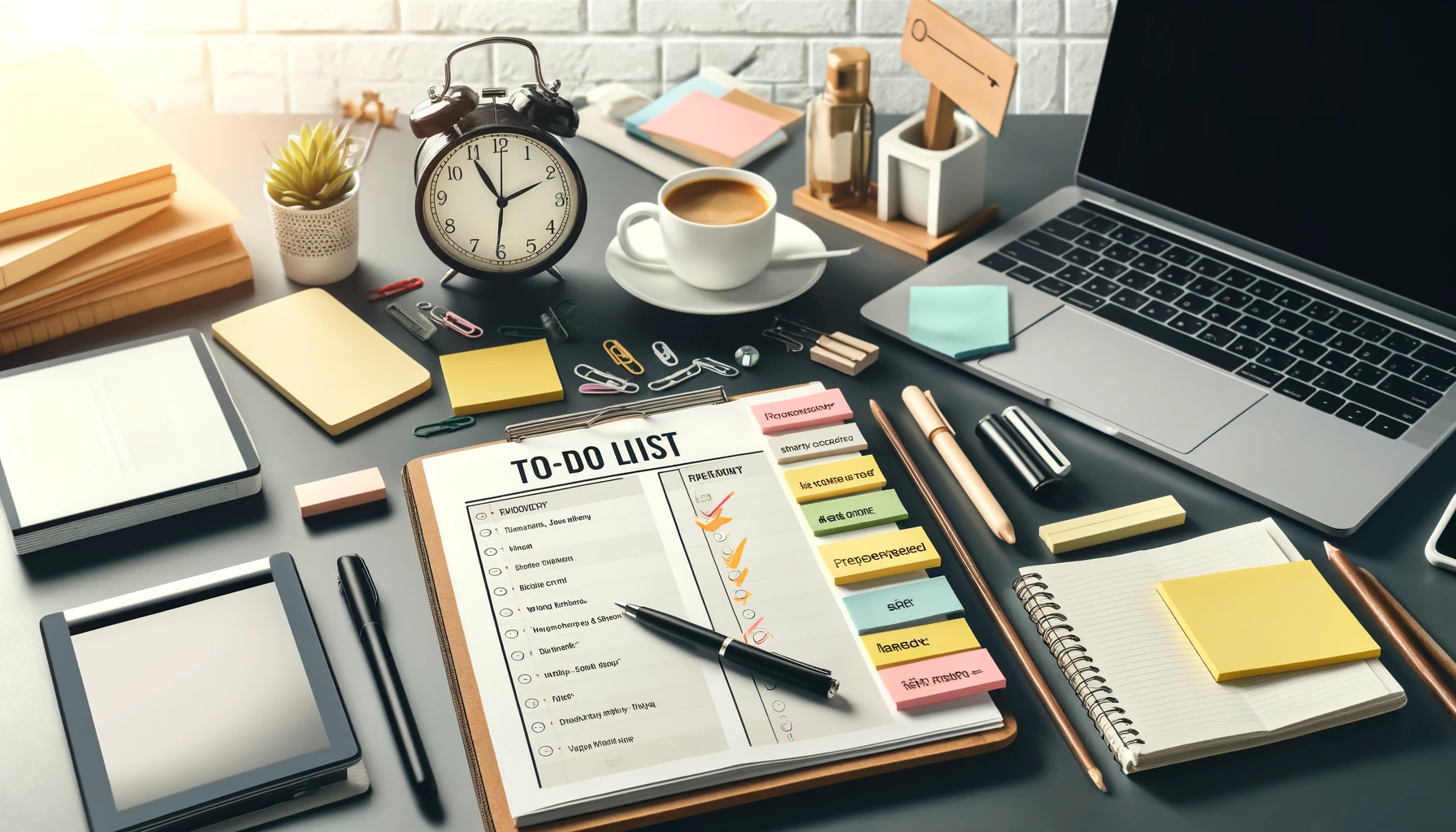Tips for You to Save Time at Work
In today’s fast-paced work environment, finding ways to save time can make a significant difference in your productivity and overall job satisfaction. Here are some practical tips to help you streamline your tasks and make the most of your workday.

1. Prioritize Your Tasks
Start by identifying your most important tasks. Use the Eisenhower Matrix to categorize your tasks into four quadrants: urgent and important, important but not urgent, urgent but not important, and neither urgent nor important. Focus on the tasks that fall into the first two categories to ensure you’re addressing the most critical work first. Additionally, use techniques like the ABCDE method to further refine your prioritization and ensure you’re working on tasks that align with your goals. To learn more about how to prioritize your tasks, read our specific article that teaches you this.
2. Use Productivity Apps
Leverage technology to stay organized and efficient. Apps like Todoist, Trello, and Asana can help you manage your tasks, set deadlines, and track your progress. These tools allow you to create task lists, assign priorities, and collaborate with team members, ensuring that nothing falls through the cracks. Additionally, consider integrating these apps with your calendar and email for seamless workflow management. See the top 5 productivity apps
3. Automate Repetitive Tasks
Identify repetitive tasks that can be automated. Tools like Zapier and IFTTT can automate workflows by connecting different apps and services. For example, you can set up a workflow to automatically save email attachments to your cloud storage or schedule social media posts in advance. Automation can also extend to tasks like data entry, reporting, and even customer follow-ups, freeing up valuable time for more strategic activities.
4. Limit Distractions
Distractions can significantly impact your productivity. Create a distraction-free workspace by turning off non-essential notifications, using noise-canceling headphones, and setting specific times for checking emails and messages. Tools like Focus@Will and Brain.fm offer background music designed to enhance concentration. Additionally, consider using apps like Freedom or StayFocusd to block distracting websites and apps during work hours. Discover the 6 Best Apps to Block Distractions.
5. Implement the Pomodoro Technique
The Pomodoro Technique involves working in focused intervals, typically 25 minutes, followed by a 5-minute break. After four intervals, take a longer break of 15-30 minutes. This method helps maintain high levels of productivity while preventing burnout. Customize the intervals to fit your personal work rhythm and use tools like Pomodone or TomatoTimer to track your sessions.
6. Delegate When Possible
Don’t hesitate to delegate tasks to others when appropriate. Delegation not only helps you manage your workload but also empowers your team members by giving them opportunities to take on more responsibility. Clearly communicate your expectations and provide the necessary resources to ensure successful task completion. Use project management tools like Monday.com to track delegated tasks and ensure accountability.
7. Batch Similar Tasks
Grouping similar tasks together can save time and reduce mental fatigue. For example, designate specific times for responding to emails, making phone calls, or conducting meetings. Batching tasks minimizes the cognitive load associated with switching between different types of activities. Use calendar blocks to schedule these batches and stick to the allocated times to maintain efficiency.
8. Use Keyboard Shortcuts
Familiarize yourself with keyboard shortcuts for the software you use most frequently. Shortcuts can save you seconds on each task, which can add up to significant time savings over the course of a day. Resources like Cheatography provide comprehensive lists of shortcuts for various applications. Additionally, consider using text expanders like PhraseExpress to automate repetitive typing tasks.
9. Keep Meetings Efficient
Meetings can be a major time drain if not managed properly. Set clear agendas, invite only necessary participants, and stick to the scheduled time. Tools like Doodle can help with scheduling, and apps like Miro facilitate collaborative brainstorming sessions. Consider using meeting management tools like Fellow to create agendas, take notes, and track action items, ensuring meetings are productive and concise.
10. Reflect and Adjust
Regularly review your productivity strategies and make adjustments as needed. Reflect on what worked well and what didn’t, and be open to experimenting with new techniques and tools. Continuous improvement is key to maintaining long-term productivity gains. Schedule regular check-ins with yourself to evaluate your progress and adjust your strategies accordingly.
11. Utilize Technology for Efficiency
Take advantage of the best automation tools to organize your day to help prioritize and manage tasks. These tools can integrate various aspects of your workflow, from task management to communication, ensuring that you stay on top of your responsibilities without getting overwhelmed.
12. Optimize Your Workspace
A well-organized workspace can significantly boost your productivity. Keep your desk tidy, arrange your tools and supplies for easy access, and ensure your computer desktop is uncluttered. Ergonomic furniture and proper lighting can also enhance your focus and reduce physical strain, making you more efficient throughout the day.
By implementing these tips, you can optimize your work processes, reduce stress, and achieve better work-life balance. Remember, the goal is not just to work harder, but to work smarter.



